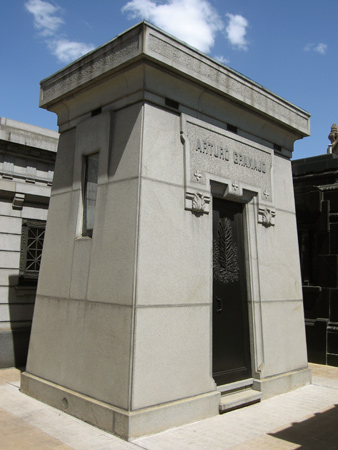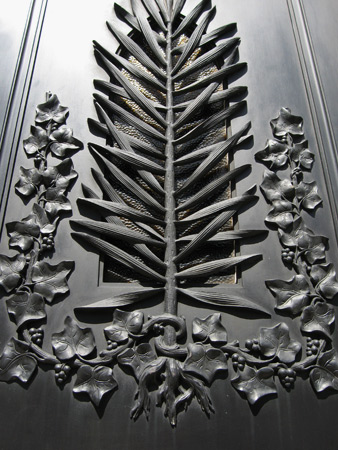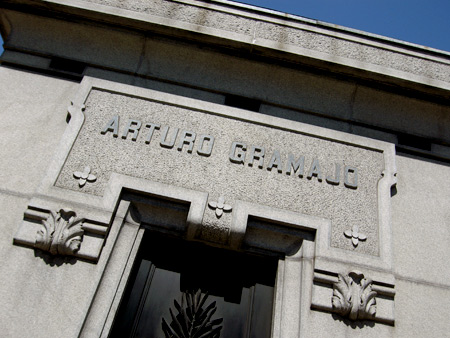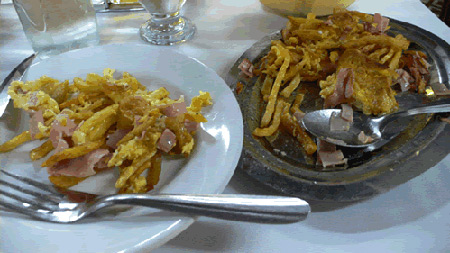Time for a little revisionist history.
When asked, most Argentines would say that President Roque Sáenz Peña made universal male suffrage national law in 1912. Without a doubt it was his administration that passed the law, but Roque Sáenz Peña died while in office, supposedly from diabetes. As Vice-President, Victorino de la Plaza inherited the difficult job of making sure the new electoral system would be honored. If he had caved in to pressure from the elite & not complied with the new law, Argentine history would be very different today.
Victorino de la Plaza grew up in poverty in the northern province of Salta but always did well in school. So well that he managed to obtain free education in the best schools in the country. He worked in the law office of Vélez Sarfield as an assistant during the writing of Argentina’s civil code, but he actually contributed much more than his title implied. De la Plaza first met Roque Sáenz Peña in that law office, & they remained friends for a lifetime. After fighting in the war with Paraguay, the costs for his education were waived since he was one of the best in his class.
From that moment, De la Plaza’s political career took off. He was appointed to several positions in both educational institutions, provincial & national government (including representative of his native Salta in Congress) & later a number of important foreign ministry & economic positions. De la Plaza spent 21 years in London, promoting Argentina every chance he could. While in the UK, he obtained important railroad investment & debt restructuring which helped Argentina become one of most modern nations in Latin America by the beginning of the 20th century.
Soon after returning to Argentina in 1907, Victorino de la Plaza ran as Vice-President on the Roque Sáenz Peña ticket. Sáenz Peña was in office from 1910 to 1914; De la Plaza completed the last 2 years of the 6-year term after the President passed away. Thanks to De la Plaza’s ability as a statesman, Argentina maintained neutrality throughout WWI & universal male suffrage successfully began in 1916.
But where is he? Multiple sources claim that he is buried in Recoleta Cemetery, but I’ve yet to see definitive proof. An old city government handout puts him near Marcelina Alen de Yrigoyen. Her tomb is pictured below. No plaque belongs to him there & the neighboring mausoleum is empty & undergoing repairs (note the scaffolding on the left):
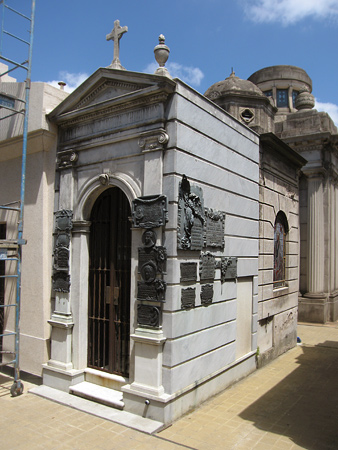
Surely they wouldn’t disturb a President. A few tombs away is Victorino’s brother with a “De la Plaza y Castañeda Vega” nameplate (pix below). No Argentine flag is inside so Victorino is MIA. Any info would be appreciated:
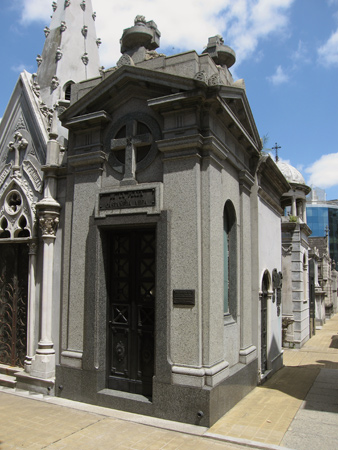
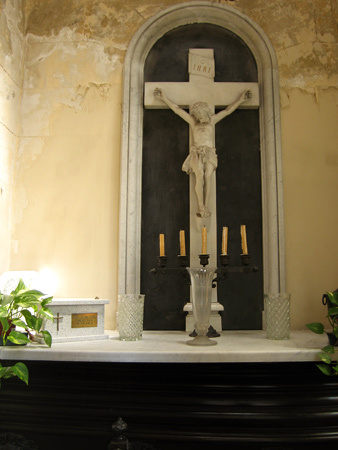
Update: Mystery solved in January 2008.
Leave a Comment